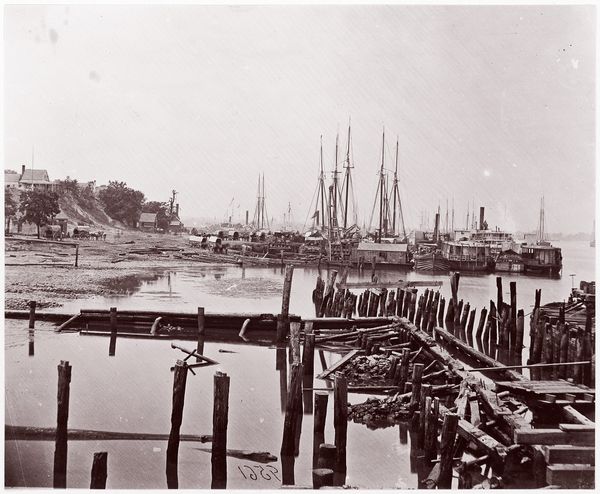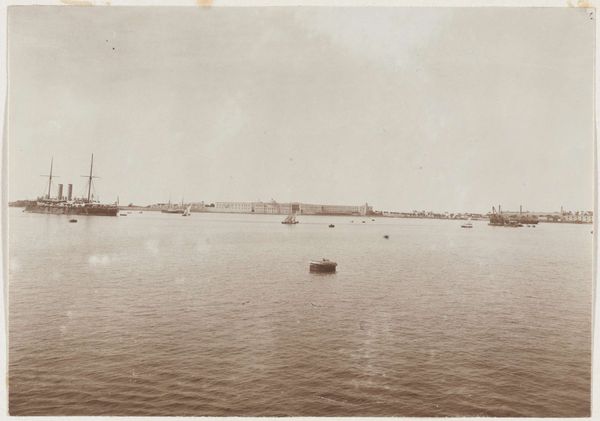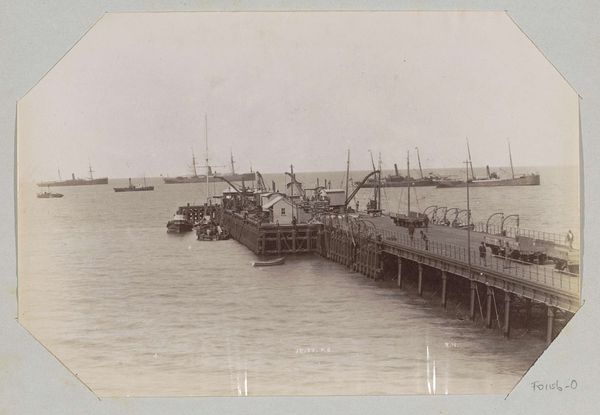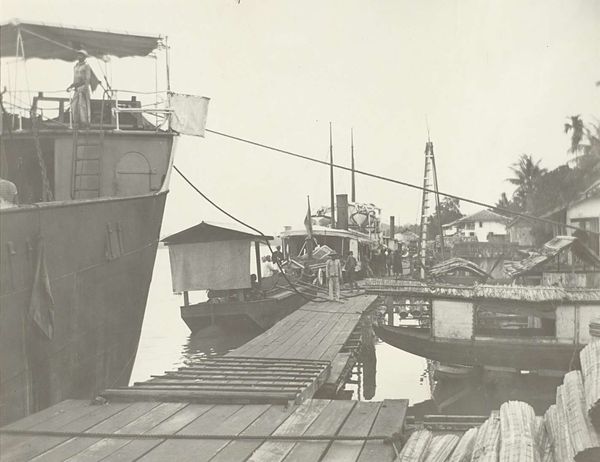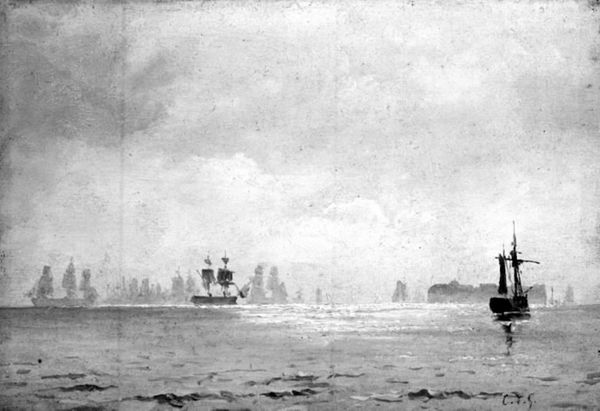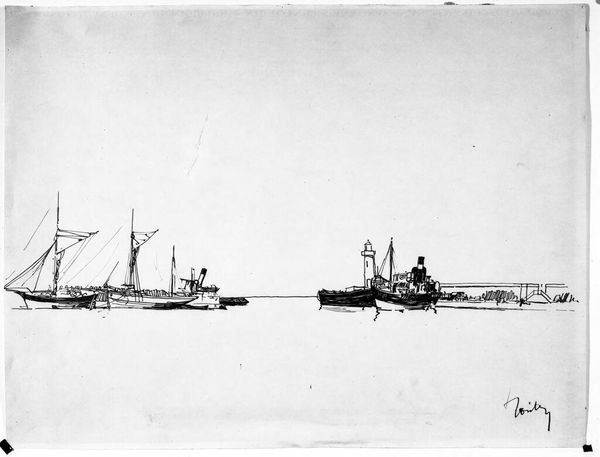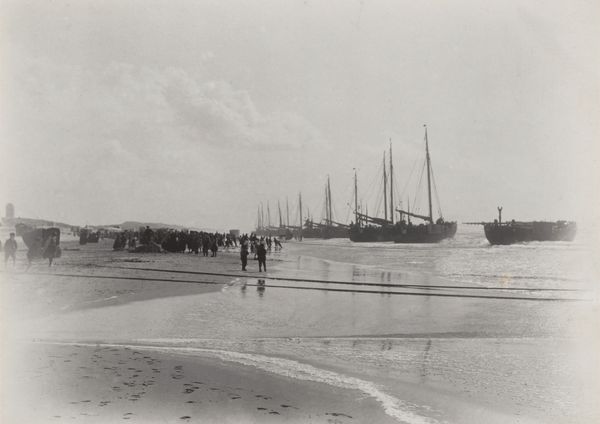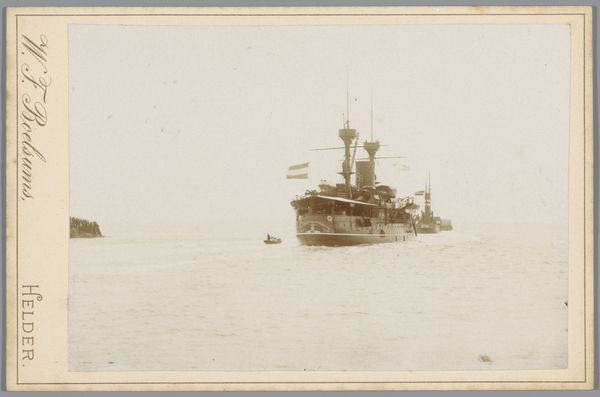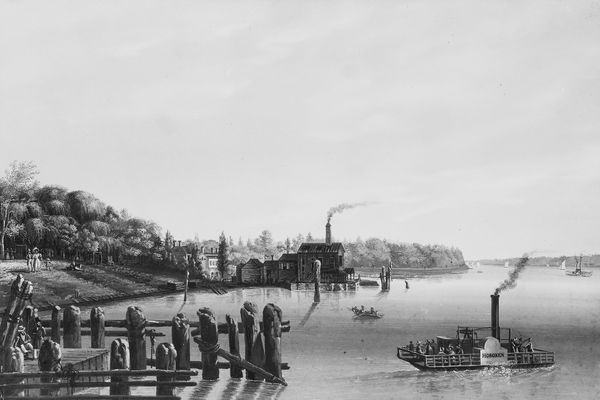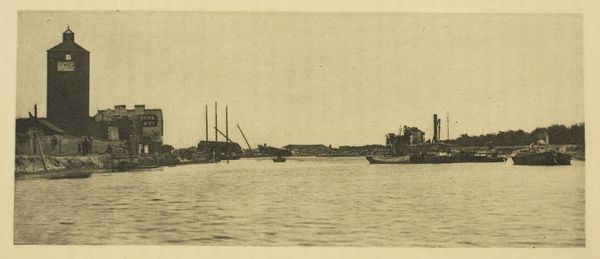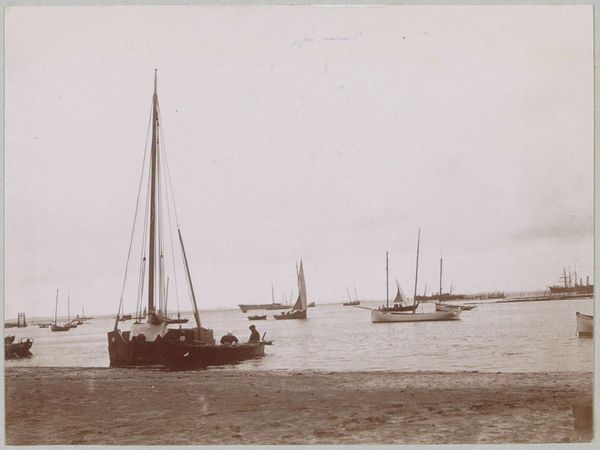
painting
#
ship
#
painting
#
landscape
#
river
#
black and white
#
monochrome photography
#
hudson-river-school
#
cityscape
#
monochrome
#
skyscape
#
monochrome
Dimensions: 13 7/16 x 20 1/2 in. (34.1 x 52.1 cm)
Copyright: Public Domain
Editor: This is Nicolino Calyo's "View of New York from Hoboken," created sometime between 1799 and 1884. It’s a monochrome painting, giving it a somewhat antique feel, like peering into the past. There's this lovely depiction of people interacting with the waterfront. What catches your eye in this piece? Curator: I see a carefully constructed depiction of early industry and labor. Consider the viewpoint, situating us in Hoboken, looking towards the burgeoning metropolis. Calyo, or perhaps the printmaker after him, isn't just presenting a pretty scene. Notice the varied ships. Sailing vessels alongside what appears to be a steamship, each representing different technologies, different scales of labor and capital. How do these vessels inform our understanding of work and exchange? Editor: So, you're saying the ships aren’t just part of the scenery, but vital pieces in understanding the city’s economy? Curator: Exactly! Think about the material realities underpinning this view. The wood for those docks, the iron in those ships, the labor involved in shipbuilding, in trade. And the artist's hand too. Why present it in monochrome? What sort of visual hierarchy is constructed? Where is your eye drawn and what material details stand out for you? Editor: The figures on the dock become more prominent. You notice the casual labor of fishing versus the implied industry happening in the background, almost like two separate worlds. Curator: Precisely. The means of production become visually layered. It presents an intriguing dialogue between the individual, local labor, and the burgeoning industrial network. Editor: I hadn't considered the interplay between these different scales of work. It makes me think about what disappeared as industry scaled up. Curator: Absolutely, the print acts almost as a document of evolving material culture. Editor: I see the artwork completely differently now – less about aesthetic beauty, and more about the infrastructure of its time.
Comments
No comments
Be the first to comment and join the conversation on the ultimate creative platform.

